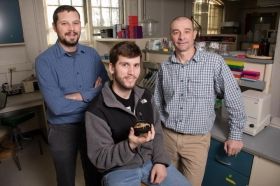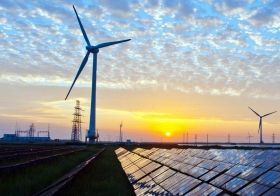
In the future of wildlife tracking, sea otters have their own social network.
Whereas we might carry cell phones or tablets, each sea otter has a small, solar-powered tag clipped carefully to one of its flippers. When the sea otters gather to nap at the ocean’s surface, their tags boot up, and check in with one another. Who else did the sea otter interact with today, where, and when?
>> Read the Full Article

The ocean is changing around the world—less oxygen, warmer water, higher acidity. The ability to quantify and observe those changes has never been more important, says Maia Hoeberechts, a scientist with the University of Victoria’s world-leading Ocean Networks Canada (ONC).
>> Read the Full Article

As far as anyone can tell, the cold-water crayfish Faxonius eupunctus makes its home in a 30-mile stretch of the Eleven Point River and nowhere else in the world. According to a new study, the animal is most abundant in the middle part its range, a rocky expanse in southern Missouri – with up to 35,000 cubic feet of chilly Ozark river water flowing by each second.
>> Read the Full Article

Wind and solar power could generate most but not all electricity in the United States, according to an analysis of 36 years of weather data by Carnegie’s Ken Caldeira, and three Carnegie-affiliated energy experts: Matthew Shaner, Steven Davis (of University of California Irvine), and Nathan Lewis (of Caltech).
>> Read the Full Article

 ENN
Environmental News Network -- Know Your Environment
ENN
Environmental News Network -- Know Your Environment